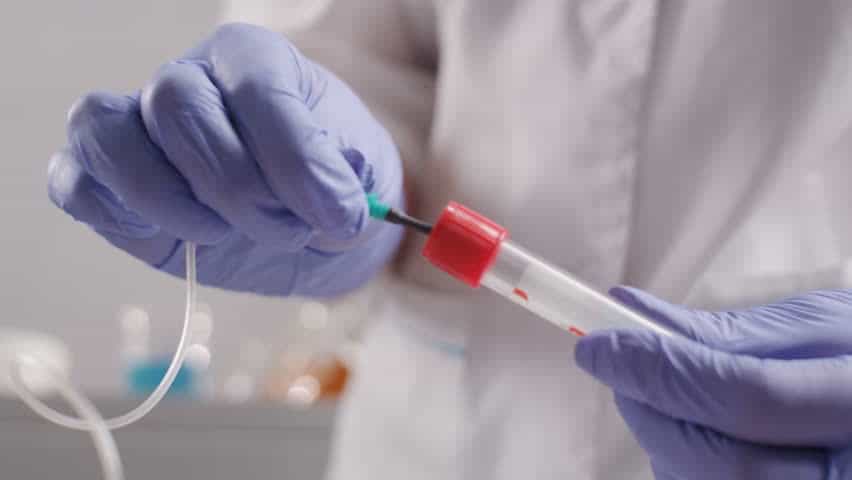Contents:
- Medical Video: How do I know if I need sinus surgery?
- What is sinusitis surgery for?
- Types of sinusitis surgery
- 1. Functional endoscopic sinus surgery
- 2. Image-guided surgery
- 3. Operation Caldwell-Luc
- Complications and risks of sinusitis surgery
- 1. Bleeding
- 2. Intracranial complications
- 3. Damage to the eyes and surrounding tissue
- 4. Loss of the sense of smell
- 5. Other nose problems
Medical Video: How do I know if I need sinus surgery?
Sinusitis is a disease that occurs when one part of the nose, sinuses, becomes inflamed due to infection. Sinus is a cavity located around the eyes and nose in the skull. The sinus is covered with thin mucus which functions to catch dust and dirt from the air. However, people with sinusitis usually have mucus blockages in the sinuses due to germs that grow. Sinusitis surgery is one of the treatment procedures for people with sinus infections that continue to recur without cure.
What is sinusitis surgery for?
Sinusitis surgery is performed to remove blockages that block the sinuses. Generally this procedure is done to eliminate some problems such as:
- Thin bone fragments
- Mucous membrane
- Nasal polyps
- Swollen or damaged tissue
- Tumors that cover the nasal passages or sinuses
In addition to treating sinus infections, this surgery is also performed to treat nasal polyps. Nasal polyps are swelling in the nasal lining located in the nasal passages and sinuses.
Large polyps can cause serious respiratory problems and are bad for the sense of smell of the sufferer. In addition, this condition can also close the sinuses which can cause infection.
Surgery can also be done when there is a problem that causes inflammation of the nasal passages and sinuses such as blockages that do not heal and other infections.
Types of sinusitis surgery
Here are some types of sinusitis surgery in the medical world, namely:
1. Functional endoscopic sinus surgery
This procedure is the most common type of surgery that is usually done. The operation is performed using a device called endoscopy. Endoscopy is a fiber optic tube with a fairly thin shape.
This tool is equipped with a telescope and certain surgical tools that will be inserted into the nose to remove tissue and various other things that clog the sinuses.
Because this procedure is done by inserting a tool through the nostrils, you will not have scarring or scars that look like a surgical process in general.
The advantage of this procedure is that this procedure is not invasive because it does not require surgery, this procedure rarely occurs in normal tissue removal, and is often done in outpatients.
2. Image-guided surgery
This procedure is done using endoscopy and image assistance during surgery to see the condition inside the sinus that can be seen through a CT scan on the monitor.
That way, the doctor can see the image in three dimensions and clearly see the part of the sinus that is blocked, so that it can lift it accurately. Generally, this procedure is recommended for people who have a fairly severe sinus condition and have had previous surgeries.
3. Operation Caldwell-Luc
This procedure includes less commonly used. Usually only used when there is abnormal growth in the sinus cavity. Compared to the previous two procedures, this operation is invasive because it involves actual surgery.
Caldwell-Luc surgery aims to eliminate abnormal tissue growth such as tumors and improve sinus flow. You do this by creating a pathway between the nose and the cavity under the eye called the maxillary sinus to help drain mucus.
Complications and risks of sinusitis surgery
Even though it is rare, there are some risks that can occur when you do this procedure, including:
1. Bleeding
Bleeding usually occurs the first 24 hours after surgery. However, it is possible that it will occur after days or even weeks after the surgery. If the blood then freezes at the bone separator between the nasal passages which is commonly called the septum, it needs to be removed with other surgical procedures.
2. Intracranial complications
The septum or thin bone layer on the top of the nose can be damaged during the operation. As a result, brain fluid can leak into the nose. In quite severe cases, this condition can lead to infection in the lining of the brain such as meningitis.
3. Damage to the eyes and surrounding tissue
Because the sinuses are very close to the eyes, sometimes surgery can cause bleeding in the eyes. This condition usually occurs when a thin layer of bone that separates the sinuses and eyes is damaged during the operation. Tearing of the tear ducts, damage to the eye muscles, until blindness is a risk of sinusitis surgery.
4. Loss of the sense of smell
After surgery, the sense of smell should improve because the air flow has been restored to return to normal. However, in quite a few cases it rarely happens just the opposite. You can experience olfactory loss due to swelling that appears after surgery.
5. Other nose problems
Surgery can result in a small amount of invisible scar tissue that builds up in the nasal passages. If this happens, you need another surgical procedure to get rid of it.
Apart from the various problems mentioned above, sinus surgery can also change a person's voice and also cause other infections. Always talk to your doctor about the best treatment steps to deal with your sinus.













